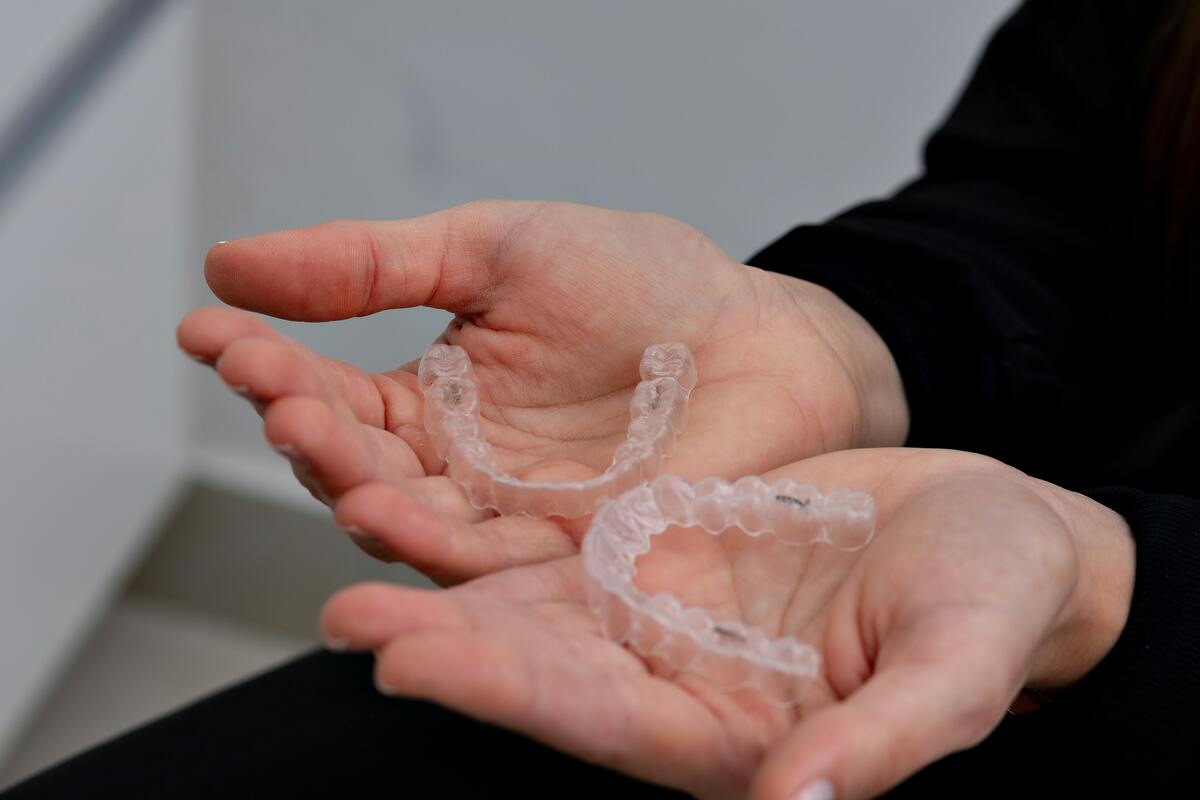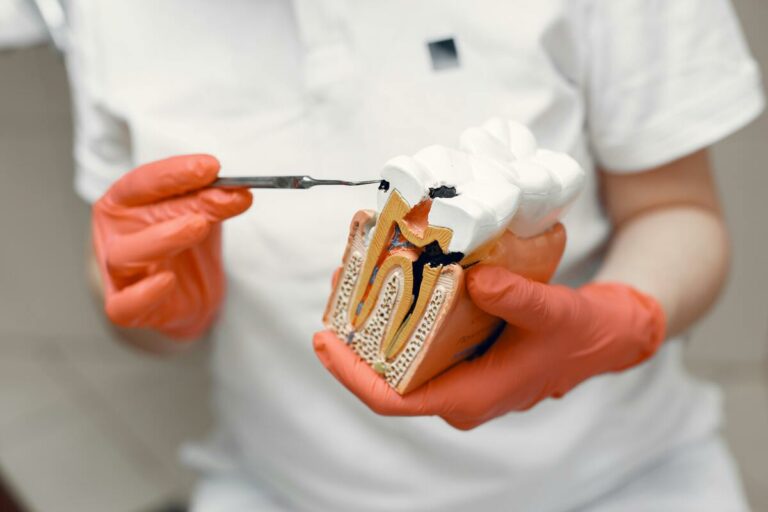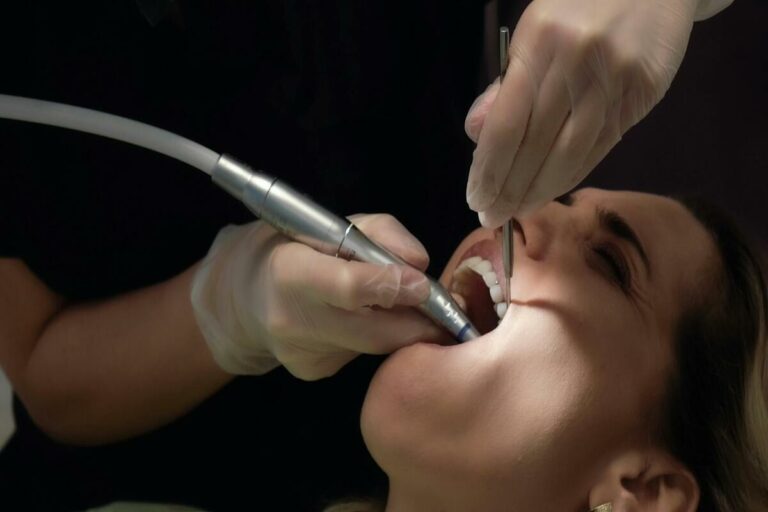Invisalign Vs Braces in Brooklyn: Which Option Is Right for You?
When contemplating orthodontic options in Brooklyn, the decision between Invisalign and traditional braces hinges on multiple factors. Each offers distinct advantages and limitations tailored to varying dental conditions and lifestyle needs. Invisalign provides a nearly invisible, removable solution, while braces offer a more thorough approach for complex cases. Understanding these differences is essential for choosing the most suitable treatment. But which aligns best with your specific needs and circumstances?
Understanding Invisalign and How It Works
Invisalign operates through a series of clear, custom-made aligners that are designed to gradually shift teeth into their desired positions. The Invisalign process begins with a thorough 3D digital scan of the patient’s mouth, allowing for precise mapping of the teeth’s current alignment. This data is used to fabricate a set of clear aligners, each engineered to apply specific, controlled forces on the teeth. Patients receive a sequence of aligners, typically changed bi-weekly, facilitating incremental adjustments. The transparent nature of these aligners renders them nearly invisible, appealing to those seeking a discreet orthodontic solution. Throughout the Invisalign process, periodic dental assessments verify the treatment is progressing as planned, allowing for adjustments if necessary. This method emphasizes both functionality and aesthetics.
Exploring the Mechanics of Traditional Braces
Traditional braces operate on the principle of applying continuous pressure to teeth through a system of brackets and wires, gradually directing them into proper alignment. The orthodontic treatment timeline with braces can vary considerably depending on the individual’s dental needs, typically ranging from 18 months to three years. Regular maintenance, including careful cleaning around the brackets and periodic adjustments by an orthodontist, is essential to guarantee ideal performance and hygiene throughout the treatment period.
Brackets and Wires Function
Often essential to the orthodontic process, brackets and wires in traditional braces function as precise instruments in the realignment of teeth. Brackets, typically made from stainless steel or ceramic, are affixed to each tooth. These components come in various types, including self-ligating and lingual brackets, each offering distinct advantages regarding friction and visibility. The wires, commonly crafted from nickel-titanium or stainless steel, are threaded through the brackets. These wire materials are chosen for their elasticity and ability to apply consistent pressure over time. This pressure gradually guides teeth into their desired positions. The synergy between bracket types and wire materials is vital, allowing orthodontists to customize treatment plans tailored to individual dental conditions and achieving ideal outcomes in teeth alignment.
Orthodontic Treatment Timeline
The duration of orthodontic treatment utilizing traditional braces typically spans 18 to 24 months, though this can vary considerably based on individual cases. The timeline is divided into several treatment phases, each critical to achieving ideal alignment. Initially, the focus is on correcting the most significant misalignments, often involving larger adjustments to the dental arch. Subsequently, refinement phases fine-tune the alignment of individual teeth. Throughout the process, regular appointments are scheduled for progress monitoring, ensuring that the braces exert the correct directional force. Adjustments are made as needed, based on the teeth’s response to the applied pressure. This meticulous approach not only maximizes treatment efficacy but also minimizes the risk of complications, ensuring a successful orthodontic outcome.
Maintenance and Care Tips
Maintaining ideal oral hygiene becomes imperative during orthodontic treatment with braces, as the appliance introduces additional surfaces where food particles and plaque can accumulate. To effectively manage this, a thorough cleaning routine is necessary. Patients should brush their teeth after each meal using a soft-bristled toothbrush, guaranteeing they reach all areas around brackets and wires. Interdental brushes or floss threaders can assist in cleaning between teeth where regular floss might struggle. Additionally, fluoride mouthwash may enhance enamel protection.
Caring tips also include avoiding sticky and hard foods that can damage braces, leading to treatment delays. Regular check-ups with the orthodontist confirm appliances are functioning correctly and allow for professional cleaning. Through diligent maintenance, patients can achieve peak orthodontic outcomes.
Comparing Aesthetic Appeal
In the domain of orthodontic treatments, aesthetic appeal plays a crucial role in a patient’s decision-making process. Aesthetic preferences often dictate whether individuals choose Invisalign or traditional braces. Invisalign aligners offer a nearly invisible appearance, catering to those who prioritize minimal visual impact. They are crafted from clear, medical-grade thermoplastic, allowing them to blend seamlessly with the natural teeth. Conversely, braces consist of metal brackets and wires that are more conspicuous. Although modern braces have evolved to include ceramic options that slightly reduce visibility, they still do not rival the subtlety of Invisalign. For individuals focused on maintaining a professional or unobtrusive appearance during orthodontic treatment, Invisalign tends to align more closely with these aesthetic desires, impacting the final decision considerably.
Assessing Comfort and Convenience
While aesthetic appeal greatly influences the choice between Invisalign and traditional braces, evaluating comfort and convenience further informs this decision-making process. Invisalign aligners, crafted from smooth plastic, often provide higher comfort levels due to their absence of metal brackets and wires, which can irritate the oral mucosa. Users report fewer incidences of discomfort and irritation. Regarding convenience factors, Invisalign aligners are removable, allowing for easier oral hygiene maintenance and unrestricted dietary choices. Conversely, traditional braces require more meticulous cleaning routines and impose dietary restrictions to prevent bracket damage. However, the fixed nature of braces eliminates the potential for patient non-compliance, which can be a concern with removable aligners. Ultimately, individual preferences and lifestyle considerations play pivotal roles in determining suitability.
Evaluating Treatment Duration and Effectiveness
When evaluating treatment duration and effectiveness between Invisalign and traditional braces, several factors come into play. Invisalign may offer a shorter treatment period for mild to moderate cases, whereas braces are often more effective for complex dental issues due to their precise control over tooth movement. Additionally, long-term results and maintenance vary, with each option requiring specific retention strategies to guarantee teeth remain in their new alignment post-treatment.
Treatment Time Comparison
Treatment duration is a critical factor in choosing between Invisalign and traditional braces, as it directly impacts patient commitment and anticipated outcomes. On average, Invisalign treatment typically ranges from 12 to 18 months, contingent upon the complexity of the case and patient adherence to wearing aligners for 20-22 hours daily. This requires consistent commitment to achieve ideal results. Conversely, traditional braces usually demand a longer treatment duration, often extending from 18 to 24 months. However, this is largely dependent on the severity of dental issues and the specific orthodontic plan. Both methods necessitate regular monitoring by orthodontic professionals to ascertain progress and adjustments. Ultimately, patient commitment to following prescribed guidelines greatly influences the efficiency and speed of achieving desired dental alignment.
Effectiveness for Complex Cases
Complexity is a significant determinant in the choice between Invisalign and traditional braces, particularly concerning treatment duration and effectiveness. In cases of complex alignment and severe overcrowding, traditional braces typically prove more effective. Braces exert continuous pressure on teeth, providing precise control over tooth movement, essential for intricate adjustments. They are often preferred by orthodontists for complex cases due to their robustness and versatility in addressing multifaceted alignment issues. Conversely, Invisalign, while effective for moderate cases, may not provide the same level of control required for severe malocclusions. The aligners are limited in their ability to apply rotational force essential for complex corrections. Therefore, for patients in Brooklyn with significant orthodontic challenges, traditional braces are generally recommended for ideal outcomes.
Results and Maintenance
Although both Invisalign and traditional braces are designed to achieve ideal alignment results, the duration and maintenance involved in each treatment can markedly differ. Traditional braces typically require a treatment duration of 18 to 36 months, while Invisalign often provides quicker results, averaging 12 to 18 months. However, the effectiveness of Invisalign is contingent on patient compliance with wearing aligners for 20-22 hours daily. Long term results for both methods depend on post-treatment maintenance routines. Patients must wear retainers to prevent teeth from shifting back. Traditional braces may require more frequent orthodontist visits for adjustments, while Invisalign users need periodic aligner updates. Ultimately, the choice between the two depends on individual treatment goals, lifestyle considerations, and commitment to maintenance routines.
Considering Lifestyle and Dietary Restrictions
How do lifestyle and dietary restrictions influence the decision between Invisalign and traditional braces? Lifestyle considerations and dietary limitations are critical factors in orthodontic treatment selection. Invisalign aligners, being removable, allow individuals to maintain their usual diet without restrictions, consequently appealing to those with specific dietary habits or social dining preferences. In contrast, traditional braces impose significant dietary limitations, as wearers must avoid hard, sticky, and chewy foods to prevent bracket damage. Additionally, Invisalign offers a discreet aesthetic, advantageous for individuals concerned with professional appearances or social engagements. Those engaging in contact sports might favor Invisalign due to reduced injury risk from metal components. Accordingly, evaluating one’s lifestyle and dietary needs is essential when determining the most suitable orthodontic solution.
Analyzing Cost and Insurance Coverage
When evaluating the financial aspects of orthodontic treatments, how do Invisalign and traditional braces compare regarding cost and insurance coverage? Invisalign typically incurs higher upfront costs, ranging from $3,500 to $8,000, compared to traditional braces, which cost between $2,500 and $7,500. A detailed cost analysis reveals that Invisalign’s pricing reflects its advanced technology and customization. Insurance policies vary widely, often covering a percentage of the total cost or a fixed amount. Many dental insurance plans include orthodontic benefits, but coverage specifics differ between Invisalign and braces. Policies may cover both options equally or favor traditional braces due to established efficacy. Patients should consult their insurance provider to understand their policy’s orthodontic treatment coverage, ensuring informed financial decisions.
Reviewing Suitability for Different Dental Issues
After analyzing the financial considerations, understanding the suitability of Invisalign and traditional braces for specific dental issues is imperative. Malocclusion types, such as overcrowding, spacing, overbite, underbite, and crossbite, determine the appropriate treatment. Invisalign is effective for mild to moderate cases, especially where aesthetic treatment preferences exist. It provides a discreet solution but may require longer durations for complex malocclusions. Traditional braces, composed of metal or ceramic brackets, are versatile for treating severe dental misalignments and complex bite issues. They offer precise control over tooth movement, making them suitable for a wide range of malocclusion types. Determining the best treatment involves evaluating the severity of the dental issue, patient compliance, and desired treatment outcomes, ensuring effective alignment and oral health.
Consulting With Your Brooklyn Orthodontist for Personalized Advice
While selecting the most appropriate orthodontic treatment, consulting with a Brooklyn orthodontist offers invaluable personalized advice tailored to individual dental needs. A personalized assessment involves a thorough examination of the patient’s oral structure, alignment issues, and overall dental health. This detailed evaluation enables the orthodontist to provide expert recommendations based on specific conditions such as crowding, spacing, or bite discrepancies. The orthodontist considers factors like age, lifestyle, and aesthetic preferences to guarantee the treatment plan aligns with the patient’s goals. By leveraging their expertise, they can effectively compare the benefits and limitations of Invisalign versus traditional braces. This collaborative approach guarantees that patients receive a customized treatment strategy, enhancing the likelihood of successful outcomes and long-term oral health improvements.
Frequently Asked Questions
Can Invisalign or Braces Cause Any Speech Impediments?
Both Invisalign and braces can temporarily affect speech clarity during the initial adjustment period. The tongue and mouth adapt to new surfaces, which may cause minor speech impediments. Typically, speech normalizes as individuals acclimate to the appliance.
What Are the Environmental Impacts of Invisalign Versus Braces?
The environmental impacts of Invisalign versus braces involve a sustainability comparison. Invisalign’s plastic aligners require frequent replacements, increasing material disposal. Traditional braces, primarily metal, may be recycled, potentially offering a more sustainable option in material disposal.
Are There Any Long-Term Dental Health Differences Between Invisalign and Braces?
The long-term effects on dental health between Invisalign and braces are generally comparable. Both effectively straighten teeth and improve oral health, though individual outcomes vary based on adherence to treatment protocols and specific orthodontic requirements.
How Do Invisalign and Braces Affect Dental Hygiene Practices?
Invisalign maintenance requires removing aligners for brushing and flossing, ensuring thorough oral hygiene. Conversely, braces cleaning involves meticulous brushing around brackets and wires, often utilizing special tools like interdental brushes or water flossers to prevent plaque buildup.
What Are the Psychological Impacts of Using Invisalign Versus Braces?
The psychological impacts of using Invisalign versus braces include a potential self-esteem boost with Invisalign due to its discreet appearance, while traditional braces can exacerbate social anxiety in some individuals due to their more noticeable and conspicuous nature.







